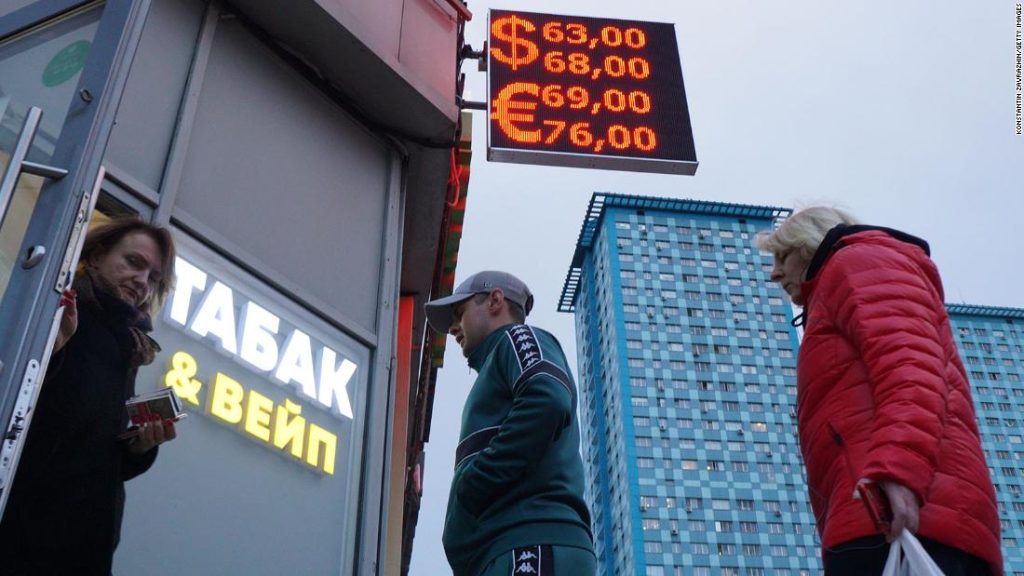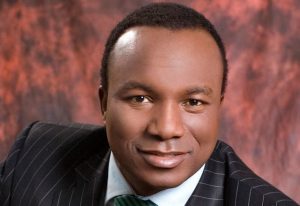PR stunt or show of strength? Russia slashes interest rates

At an extraordinary meeting, the Russian central bank cut interest rates to 11% from 14% and said further reductions could follow. Rates were hiked as high as 20% in the immediate aftermath of Russia’s invasion of Ukraine in February as the bank tried to prevent Western sanctions triggering a financial crisis. “Inflationary pressure eases on the back of the ruble exchange rate dynamics as well as the noticeable decline in inflation expectations of households and businesses,” the Russian central bank said in a statement. It said it expected inflation to fall to between 5% and 7% this year, down from around 17.5% this month. The ruble crashed to a record low of about 135 to the US dollar in the wake of the invasion as the West froze about half of Russia’s $600 billion foreign currency reserves. Hundreds of multinationals have quit the country, and Russia has been banned from buying key Western technology and services. But Russia’s currency has since rebounded and is the world’s best performer this year, according to Reuters, propped up by capital controls aimed at forcing businesses and investors to buy rubles, and soaring global energy prices. One US dollar now buys about 62 rubles.Western efforts to curtail Russian energy imports have been slow-moving, and surging oil and gas prices have boosted the Kremlin’s coffers.”The key point is that high oil and gas revenues are providing policymakers with a lifeline, allowing them to row back emergency economic measures,” William Jackson, chief emerging markets economist at Capital Economics, said in a research note. “Against that backdrop, a further easing of capital controls and additional rate cuts seem likely,” he added. Russian President Vladimir Putin spent years leading up to the war trying to build a “fortress economy,” accumulating reserves that could be deployed in the event of an emergency. On Wednesday, he announced a 10% increase in pensions and the minimum wage to help protect Russians from the impact of inflation.But Russia’s economy is hardly on a solid footing. Capital controls and emergency reserves can last only so long. And new US restrictions mean Russia could soon default on its foreign debt for the first time in more than a century.Timothy Ash, a senior emerging market strategist at Bluebay Asset Management, said Putin was now having to deploy those emergency buffers, and that the rate cut was part of a public relations campaign. ‘Info war'”They are in an info war with the west, the ruble’s part of that,” he told CNN Business. A deep recession is coming this year. The International Monetary Fund expects Russian GDP to contract by 8.5%, as a consequence of the harsh sanctions imposed on Moscow. Still, those sanctions have yet to strike deep at the heart of Russia’s fossil fuel resources. Moscow is finding it harder to sell its oil and coal, but its biggest energy customer — the European Union — still can’t agree on an oil embargo and an outright ban on Russian natural gas imports isn’t even on the table. Russia is now trimming forecasts for the decline in its oil production this year. Deputy Prime Minister Alexander Novak said oil output could fall to between 480 million and 500 million tonnes, down about 6.5% on 2021, state news agency RIA reported Thursday. Russia’s economy ministry had previously forecast a drop of about 9.3% this year. “I think the contraction will be way smaller,” Novak was quoted as telling reporters on a visit to Iran. “There was only one month with contraction of more than 1 million barrels per day, which is not as deep by now. So, I think there will be a recovery in the future,” he added.While many Western traders and refineries have been shunning Russian oil and coal, India and China have moved in to pick up some of the slack. — Reuters contributed to this article.




